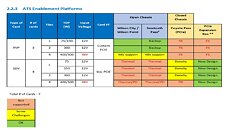
ASRock Rack Unveils GPU Servers, Offers AI GPU Choices from All Three Brands
ASRock Rack sells the entire stack of servers a data-center could possibly want, and at Computex 2024, the company showed us their servers meant for AI GPUs. The 6U8M-GENOA2, as its name suggests, is a 6U server based on 2P AMD EPYC 9004 series "Genoa" processors in the SP5 package. You can configure it with even the variants of "Genoa" that come with 3D V-cache, for superior compute performance from the large cache. Each of the two SP5 sockets is wired to 12 DDR5 RDIMM slots, for a total of 24 memory channels. The server supports eight AMD Instinct MI300X or MI325X AI GPUs, which it wires out using Infinity Fabric links and PCIe Gen 5 x16 individually. A 3 kW 80 Plus Titanium PSU keeps the server fed. There are vacant Gen 5 x16 slots left even after connecting the GPUs, so you could give it a DPU-based 40 GbE NIC.
The 6U8X-EGS2 B100 is a 6U AI GPU server modeled along the 6U8M-GENOA2, with a couple of big changes. To begin with, the EPYC "Genoa" chips make way for a 2P Intel Xeon Socket E (LGA4677) CPU setup, for 2P Xeon 5 "Emerald Rapids" processors. Each socket is wired to 16 DDR5 DIMM slots (the processor itself has 8-channel DDR5, but this is a 2 DIMM-per-channel setup). The server integrates an NVIDIA NVSwitch that wires out NVLinks to eight NVIDIA B100 "Blackwell" AI GPUs. The server features eight HHHL PCIe Gen 5 x16, and five FHHL PCIe Gen 5 x16 connectors. There are vacant x16 slots for your DPU/NIC, you can even use an AIC NVIDIA BlueField card. The same 3 kW PSU as the "Genoa" system is also featured here.
The 6U8X-EGS2 B100 is a 6U AI GPU server modeled along the 6U8M-GENOA2, with a couple of big changes. To begin with, the EPYC "Genoa" chips make way for a 2P Intel Xeon Socket E (LGA4677) CPU setup, for 2P Xeon 5 "Emerald Rapids" processors. Each socket is wired to 16 DDR5 DIMM slots (the processor itself has 8-channel DDR5, but this is a 2 DIMM-per-channel setup). The server integrates an NVIDIA NVSwitch that wires out NVLinks to eight NVIDIA B100 "Blackwell" AI GPUs. The server features eight HHHL PCIe Gen 5 x16, and five FHHL PCIe Gen 5 x16 connectors. There are vacant x16 slots for your DPU/NIC, you can even use an AIC NVIDIA BlueField card. The same 3 kW PSU as the "Genoa" system is also featured here.































